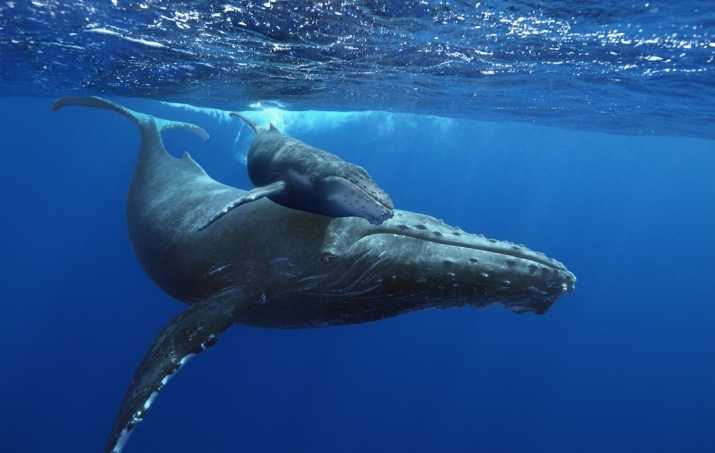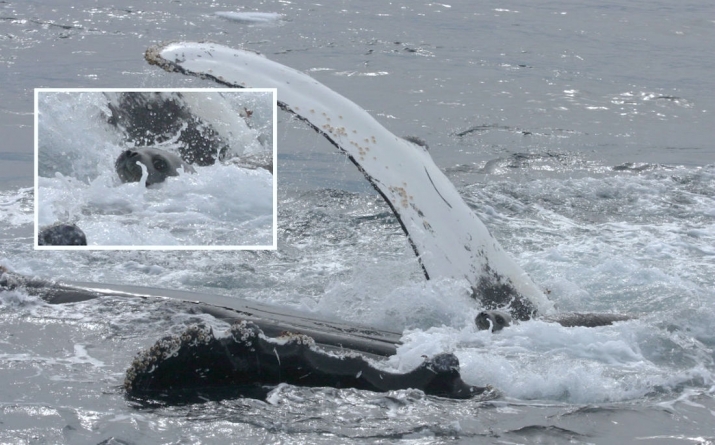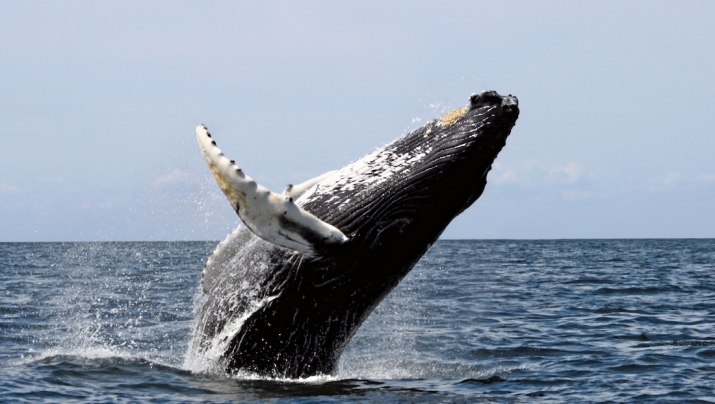NEWS
Why Are Humpback Whales Saving Other Species from Orca Attacks?
 Could a sense of altruism be behind the numerous documented accounts of humpback whales defending other animals from killer whale attacks? From challengertlh.com
Could a sense of altruism be behind the numerous documented accounts of humpback whales defending other animals from killer whale attacks? From challengertlh.comAre humpback whales exhibiting altruistic behavior when they apparently come to the aid of other marine animals being attacked by killer whales? Perhaps so, according a new study published in the journal Marine Mammal Science, which shows that humpbacks—the only whales known to attack killer whales, or orcas—will often band together and sometimes travel significant distances to thwart a killer whale attack, regardless of the type of animal being targeted.
Numerous eyewitness reports describe humpbacks approaching killer whales that are pursuing other prey. Sometimes the orcas’ victims have been humpback mothers with young calves, but humpbacks have also made their presence felt when orcas have been in pursuit of other whale species, or even seals and sea lions, slapping their tail flukes and fins in the water, and making loud “bellowing” sounds to drive the orcas away. The authors of the new study have documented at least 115 such incidents that took place between 1951 and 2012, in which humpback whales have come to the aid of ocean animals including sea lions, ocean sunfish, seals, and gray whales.
Robert L. Pitman, a marine ecologist at the National Oceanic and Atmospheric Administration's Southwest Fisheries Science Center in southern California, and lead author of the study, related a dramatic incident in 2009 in which a group of killer whales knocked a Weddell seal off an ice floe. A pair of humpbacks appeared on the scene, one of which flipped onto its back, enabling the seal to seek refuge on its belly, then arched its chest out of the water to keep the seal away from the hungry orcas. When the seal started to slip off, the whale carefully used a fin to push it back onto its chest. The seal was later able to safely climb onto another sheet of ice.
 A humpback whale shields a Weddell seal from an attacking killer whale. Photo by Robert L. Pitman. From livescience.com
A humpback whale shields a Weddell seal from an attacking killer whale. Photo by Robert L. Pitman. From livescience.comAdult humpback whales range in length from 12–16 meters and weigh in at some 36 tonnes, dwarfing adult orcas, which can grow to up to 8 meters and weigh up to 4 tonnes. Known for engaging in breaching and other surface activities, making them popular with whale-watchers, humpbacks are friendly and commonly interact and play with other cetacean species, such as bottlenose dolphins. Males humpbacks also produce complex songs lasting 10–20 minutes, which they can repeat for hours at a time.
In another documented incident from 2012, the researchers witnessed a pod of orcas attack and kill a grey whale calf. Soon afterwards, more than a dozen humpback whales arrived and proceeded to stave off the feeding killer whales for more than six hours.
“One specific humpback whale appeared to station itself next to that calf carcass, head pointed toward it, staying within a body length away, loudly vocalizing and tail slashing every time a killer whale came over to feed,” recalled Alisa Schulman-Janiger, a whale researcher with the California Killer Whale Project and co-author of the study. “This humpback whale behavior continues to happen in multiple areas throughout the world. I have witnessed several encounters, but nothing as dramatic as [this event].” (National Geographic)
After documenting numerous encounters between humpbacks and orcas, Pitman and his team concluded that while humpback whales will vigorously defend their own calves from killer whale attacks, they will also launch preemptive attacks—often with the apparent intent of aiding a different species. While not ruling out higher motives, Pitman suspects the humpbacks might simply rush to the scene whenever they hear killer whales fighting. “I think they just have a simple rule,” Pitman says. “When you hear a killer whale attack, go break it up.” (Science)
Other experts are less startled by these apparent acts of concern for the welfare of other animals. “Although this behavior is very interesting, I don’t find it completely surprising that a cetacean would intervene to help a member of another species,” said Lori Marino, president of the Whale Sanctuary Project, noting that humpbacks are capable of sophisticated thinking, decision-making, problem-solving, and communication. “So, taken altogether, these attributes are those of a species with a highly developed degree of general intelligence capable of empathic responses.” (National Geographic)
While there is still room for debate and further on whether humpbacks really are acting out of a sense of altruism, or if there’s another more self-serving motive behind their behavior, what is clear is there’s still much to learn and understand about the lives and actions of the sentient creatures with whom we share this planet.
 From wikimedia.org
From wikimedia.orgSee more
Humpback whales interfering when mammal-eating killer whales attack other species: Mobbing behavior and interspecific altruism? (Wiley Online Library)
Why Humpback Whales Protect Other Animals From Killer Whales (National Geographic)
Saved by the Whale! Humpbacks Play Hero When Orcas Attack (Live Science)
Why did a humpback whale just save this seal's life? (Science)
Related
Recognizing the Rights of Animals as Sentient Beings (Buddhistdoor Global)














